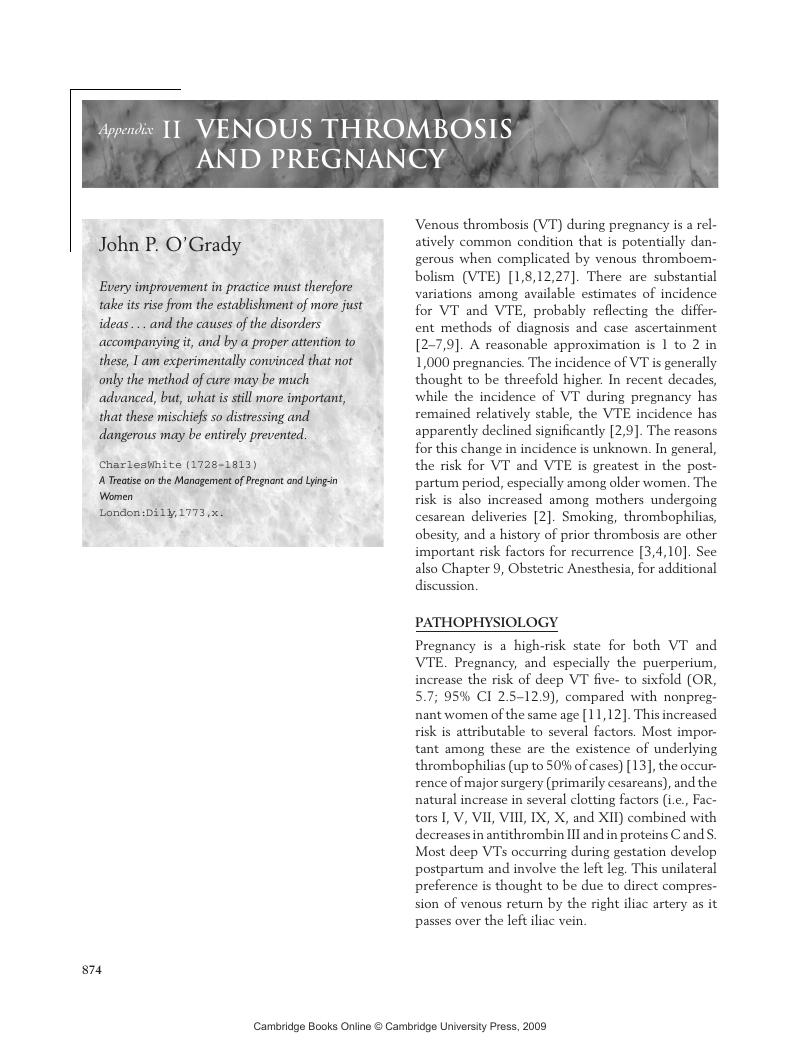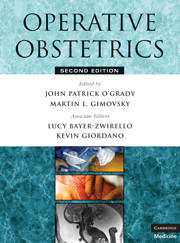Book contents
- Frontmatter
- Contents
- Foreword
- Preface
- Acknowledgments
- Contributors
- Part I ANTEPARTUM
- Part II INTRAPARTUM AND POSTPARTUM
- Part III SURGICAL PROCEDURES
- Part IV SPECIAL ISSUES
- APPENDIX
- Appendix I Appendix of Legal Principles
- Appendix II Venous Thrombosis and Pregnancy
- Appendix III Fetal Heart Rate Monitoring: Surgical Procedures
- Index
- Plate section
- References
Appendix II - Venous Thrombosis and Pregnancy
from APPENDIX
Published online by Cambridge University Press: 07 May 2010
- Frontmatter
- Contents
- Foreword
- Preface
- Acknowledgments
- Contributors
- Part I ANTEPARTUM
- Part II INTRAPARTUM AND POSTPARTUM
- Part III SURGICAL PROCEDURES
- Part IV SPECIAL ISSUES
- APPENDIX
- Appendix I Appendix of Legal Principles
- Appendix II Venous Thrombosis and Pregnancy
- Appendix III Fetal Heart Rate Monitoring: Surgical Procedures
- Index
- Plate section
- References
Summary

- Type
- Chapter
- Information
- Operative Obstetrics , pp. 874 - 879Publisher: Cambridge University PressPrint publication year: 2008

